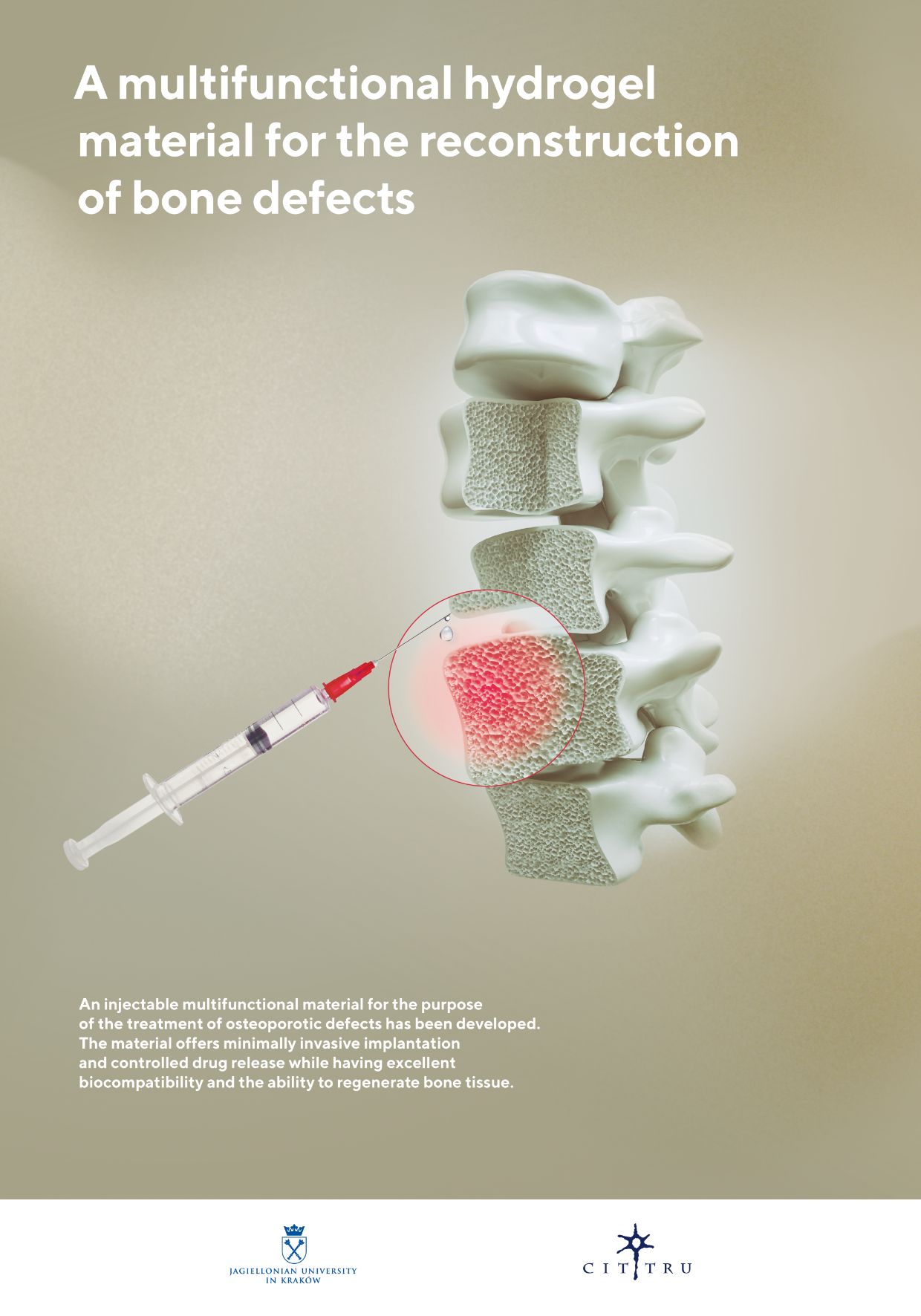
A multifunctional hydrogel material for the reconstruction of bone defects
Description: An injectable, multifunctional material for the purpose of the treatment of osteoporotic defects has been developed. The material offers minimally invasive implantation and controlled drug release and has excellent biocompatibility, as well as the ability to regenerate bone tissue.
Osteoporosis is a disease of the skeletal system that causes a decrease in the density of bone tissue, which results in their weakening and the risk of fractures. Researchers from the Faculty of Chemistry, Jagiellonian University, have developed a multifunctional material for the purpose of the treatment of osteoporotic defects. The material offers minimal implantation invasiveness and controllable drug release process and features excellent biocompatibility as well as the regenerability of bone tissue. The developed material is injectable, which enables a low-invasive, controlled placing of the therapeutic substance in the bone defect. In addition, the biomaterial is characterized by a simple and low-cost method of synthesis, biointegration of the material with bone tissue facilitating bone mineralization process, biomatrix convenient for colonization with osteoblastic cells, favorable mechanical properties.
Organisation: Jagiellonian University
Innovator(s): Lewandowska-Łańcucka Joanna, Krajcer Aleksandra, Hinz Alicja, Bzowska Monika
Category: Medicine, Biotechnology and Medical Devices
Country: Poland

